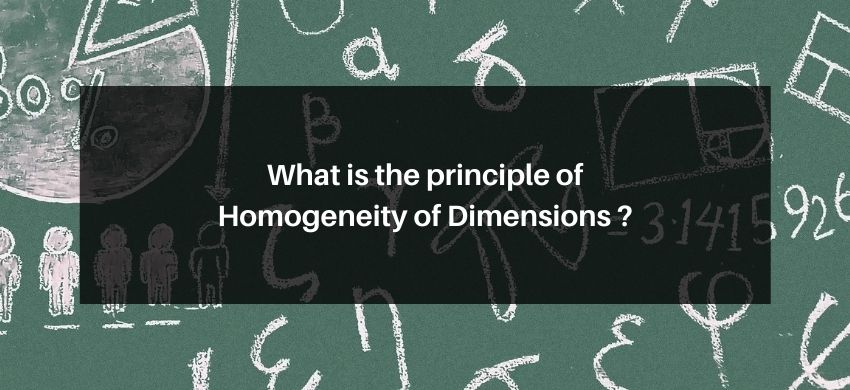
Principle of Homogeneity of Dimensions
The dimension of physical quantity on the left-hand side of the dimensional equation should equal to the net dimensions of all physical quantities on the right-hand side of it.
Ex. If in the form $x=3 y z^{2}, x$ and $z$ represent electrical capacitances and magnetic induction the calculate the dimensional equation of $\mathrm{y}$.
Sol. By the principle of homogeneity of dimension
Dimension equation of $x \quad=$ Dimension equation of $\left(3 y z^{2}\right)$
$\mathrm{M}^{-1} \mathrm{~L}^{-2} \mathrm{~T}^{4} \mathrm{~A}^{2} \quad=$ Dimension equation of $(\mathrm{y}) \times\left(\mathrm{M}^{1} \mathrm{~L}^{0} \mathrm{~T}^{-2} \mathrm{~A}^{-1}\right)^{2}$
Dimension of $(y) \quad=M^{-3} L^{-2} T^{8} A^{4}$
Ex. In the formula; $N=-D\left[\frac{n_{2}-n_{1}}{x_{2}-x_{1}}\right], D=$ diffusion coefficient, $n_{1}$ and $n_{2}$ is number of molecules in unit volume along $x_{1}$ and $x_{2}$. Which represents distances where $N$ is number of molecules passing through per unit area per unit time Calculate dimensional equation of D.
Sol. By Homogeneity theory of Dimension
Dimension of $(N)=$ Dimension of $D \times \frac{\text { Dimension of }\left(n_{2}-n_{1}\right)}{\text { Dimension of }\left(x_{2}-x_{1}\right)}$
$\frac{1}{\mathrm{~L}^{2} \mathrm{~T}}=$ Dimension of $\mathrm{D} \times \frac{\mathrm{L}^{-3}}{\mathrm{~L}}$
$\Rightarrow \quad$ Dimension of ' $D$ ' $\quad=\frac{L}{L^{-3} \times L^{2} T}=\frac{L^{2}}{T}=L^{2} T^{-1}$
Also Read
JEE Physics Notes
To watch Free Learning Videos on JEE by Kota’s top IITian Faculties Install the eSaral App
